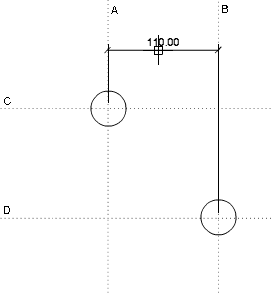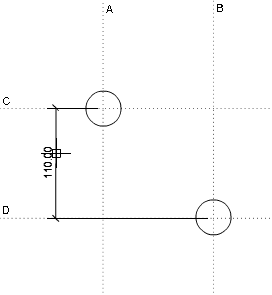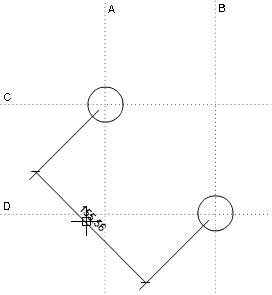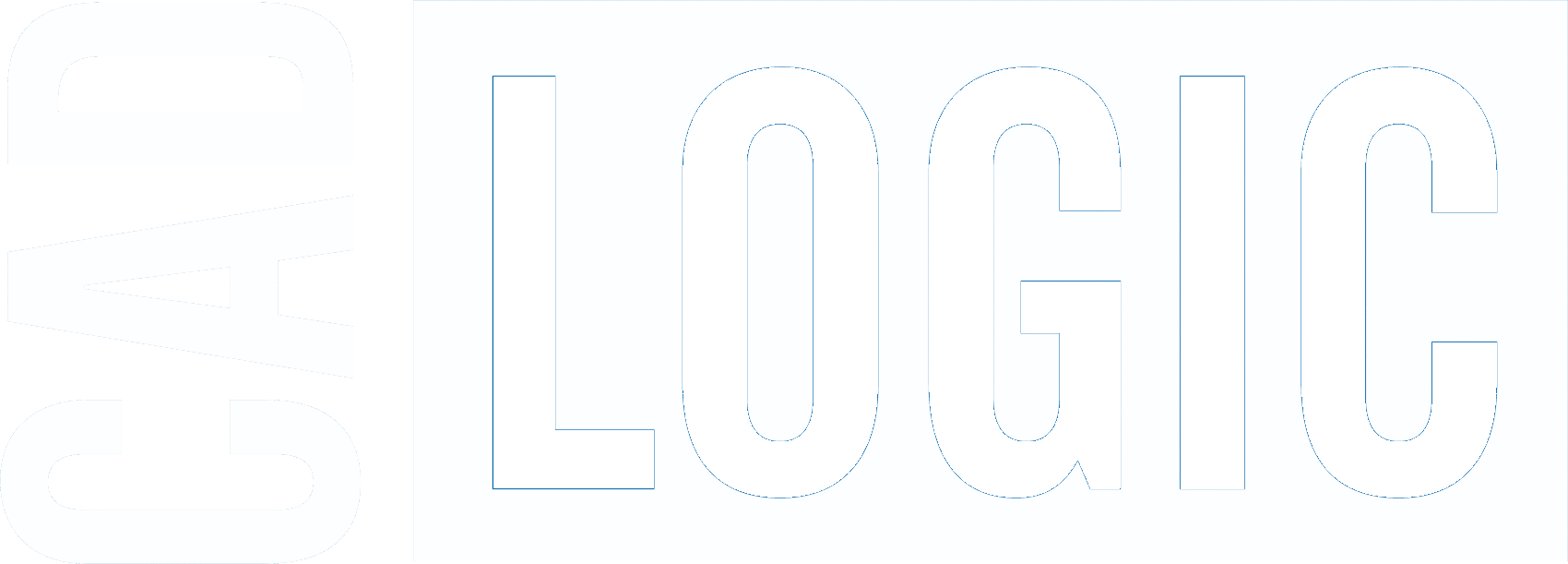More Draft it Software Details
The following basic functionality applies to all Draft it versions:- Free , Plus , Pro and Architectural.
Draft it Version 5 is faster and more powerful than previous versions whilst retaining its acclaimed ease of use. It is a 2D CAD software for suitable for all users, in the office or at home.
You can create, print and save your own drawings and designs.
Draft it's easy to use snapping and co-ordinate input make drawing construction an almost effortless process. When drawing the system displays dynamic dimensions so you can visually check
distances/sizes, or you can type in sizes directly.
Alternatively you can snap to end points, mid points, intersections etc. where Draft it identifies the type of snap as the cursor passes over it.
In the example here you can see a line being drawn between various points (we remove it each time for clarity).
You can see how Draft it displays the available snap point when the cursor
is positioned near to it. Accepting a snap point requires just a click.
The next example also drawing a line demonstrates switching input methods, once again the line is removed each time for clarity.
After clicking any position to start drawing a line, a dynamic line is attached from this location to the cursor.
There are three options to select from, 'snap', 'X,Y' and 'Polar'.
The snap setting as demonstrated in the example above allows selection of existing points on the drawing.
When 'X,Y' is set Draft it will select the next point using X & Y values of the current Units (Millimetres, Centimetres, Metres, Decimal Inches, Fractional Inches, Decimal Feet / Inches, Fractional Feet / Inches are available for selection). When set to 'Polar' dynamic dimensions display the next position by angle and length.
 As you can see dynamic dimensions display relative values from the previous point, however if there is no previous position such as when defining the first point of the line then no
dynamic dimensions are displayed. The increment of the dimensions is user definable.
As you can see dynamic dimensions display relative values from the previous point, however if there is no previous position such as when defining the first point of the line then no
dynamic dimensions are displayed. The increment of the dimensions is user definable.
In addition to the above Draft it allows relative co-ordinate input. This means at any time a new position can be defined relative to existing entities, eliminating the need in many cases for creating specific construction geometry. This feature is invoked by simply holding down the 'R' key when over an existing snap point to switch on the 'X,Y' or 'Polar' input methods.
Once drawn Draft it entities can be dynamically edited, the example here shows what happens when a line is selected.
The rectangles at either end and in the middle are called 'handles'.
These can be clicked on and moved.
You click on either of the blue handles to move that end of the line or click in the red one to move the entire line.
This is the basis of editing in Draft it. Multiple entities can be selected and modified like this with the option to use dynamic dimensions or snaps to select new positions.
Dimensioning is very easy using Draft it as demonstrated by the following linear dimension example video.
A linear dimension requires three points to be selected, two points to measure between and one to place the dimension itself.
Once the two points are selected the position and orientation are controlled as the cursor is moved around. Simply click as required to define the 3rd point.
The following images explain the options in a little more detail. In each of these the two points have been selected to dimension between, Draft it now requires the final point to finish the dimension. We have labelled four dotted lines to help explain the possibilities.
Here you will see that if the cursor is between A & B, then the dimension is always horizontal in the example in this image.

A vertical dimension is achieved when the cursor is between C & D but not A & B i.e. the centre square in the example in this image.

When the cursor is in any of the 4 corners the dimension is aligned to the two points. i.e. If the cursor is not between the points in both the X (horizontal) & Y (vertical) axis. Shown in the example in this image.

Learn More About Draft it
Feature Comparison
Compare the features of all the Draft it versions using the link below.
Feature Comparison
Testimonials
View testimonials from some of our Draft it users using the link below.
Testimonials
V5 Features
Check out the new features in Draft it V5 using the link below.
V5 Features
Return To Overview
You can go back to the overview page by using the link below.
Return to Architectural
Any questions?
Perhaps you need help deciding which of our CAD systems is right for you, or maybe you need to chat with us about our bespoke development service.
Don’t hesitate to get in touch. The Draft it team is dedicated to ensuring you get the best design experience on the market. Whatever you need - call us, email us – we’re here to help.

 Download Draft it V5 Free
Download Draft it V5 Free Feature Comparison
Feature Comparison Postal Address Details
Postal Address Details